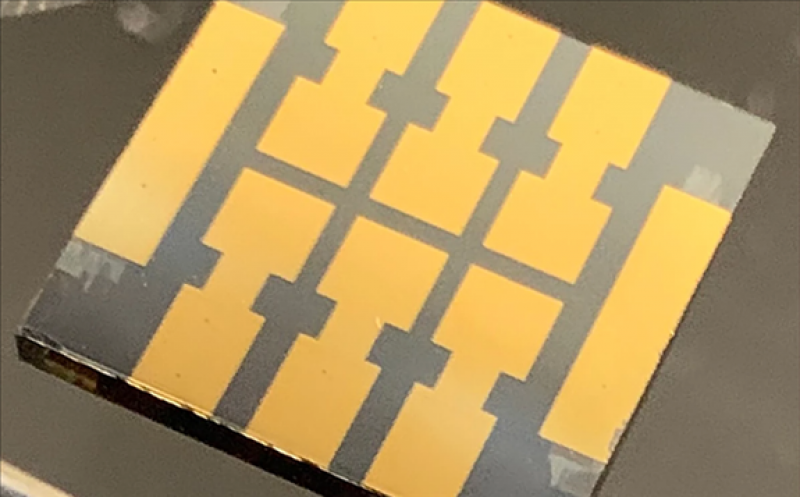In a relatively short space of time, perovskite solar cells have become a highly promising candidate when it comes to how we might generate electricity in the future, but there are some design problems to overcome first. These largely relate to stability issues that see the cells quickly deteriorating during use, but scientists at Brown University have come up with a way of addressing this by targeting a weak point with something they call molecular glue.

Scientists have seen steady gains in the performance of perovskite solar cells over the past decade or so, with the alternative design now rivaling the efficiency of conventional silicon cells. Silicon cells also require expensive equipment and high temperatures to produce, where perovskite cells can be fabricated comparatively cheaply and at room temperature, and then more easily recycled after use. These factors combine with their excellent light-absorbing potential to make them a promising proposition.
As they're made from different materials, temperature changes can cause these different layers to expand or contract at different rates, leading to mechanical stresses that causes them to decouple. The Brown University scientists have focused on what they say is the most troublesome of interfaces between these layers, where the light-absorbing perovskite film meets the electron transport layer, which manages the current flowing through the cell.
“A chain is only as strong as its weakest link, and we identified this interface as the weakest part of the whole stack, where failure is most likely,” said senior author of the study Nitin Padture. “If we can strengthen that, then we can start making real improvements in reliability."
In earlier work as a material scientist, Padture had developed novel ceramic coatings for use in high-performance settings like aircraft engines. Building on this, he and the study authors started to investigate how compounds called self-assembled monolayers (SAMs) could help them address the stability issues plaguing perovskite solar cells.
“This is a large class of compounds,” Padture said. “When you deposit these on a surface, the molecules assemble themselves in a single layer and stand up like short hairs. By using the right formulation, you can form strong bonds between these compounds and all kinds of different surfaces.”
These SAMs are able to be applied to the cells through a dip-coating process at room temperature, and the team found one recipe in particular proved particularly promising. Using SAMs made of silicon and iodine atoms, the scientists were able to form strong bonds between the light-absorbing perovskite film and the electron transport layer.
“When we introduced the SAMs to the interface, we found that it increases the fracture toughness of the interface by about 50 percent, meaning that any cracks that form at the interface tend not to propagate very far,” Padture said. “So in effect, the SAMs become a kind of molecular glue that holds the two layers together.”
In testing, the team found this approach lead to substantial improvements in the longevity of the perovskite solar cells, which retained 80 percent of their peak efficiency after around 1,300 hours of use. This was compared to non-SAM cells which only lasted around 700 hours, with the team projecting that their new design could operate at this level for around 4,000 hours. Silicon cells typically offer this type of performance over 25 years, so there is lots of work to do, but the signs are promising.
“One of the other things we did, which people don’t normally do, is we broke open the cells after testing,” said Zhenghong Dai, first author of the research. “In the control cells without the SAMs, we saw all kinds of damage such as voids and cracks. But with the SAMs, the toughened interfaces looked really good. It was a dramatic improvement that really kind of shocked us.”
Notably, the researchers say the addition of the SAMs doesn't compromise the efficiency of the cell, rather, it actually improves it a small amount by eliminating small defects that would normally form as the two layers are bonded together. They hope to build on these promising findings by applying the technique to interfaces between the other layers in perovskite solar cell stacks, to improve the stability even further.
“This is the kind of research that’s required in order to make cells that are inexpensive, efficient and perform well for decades,” Padture said.